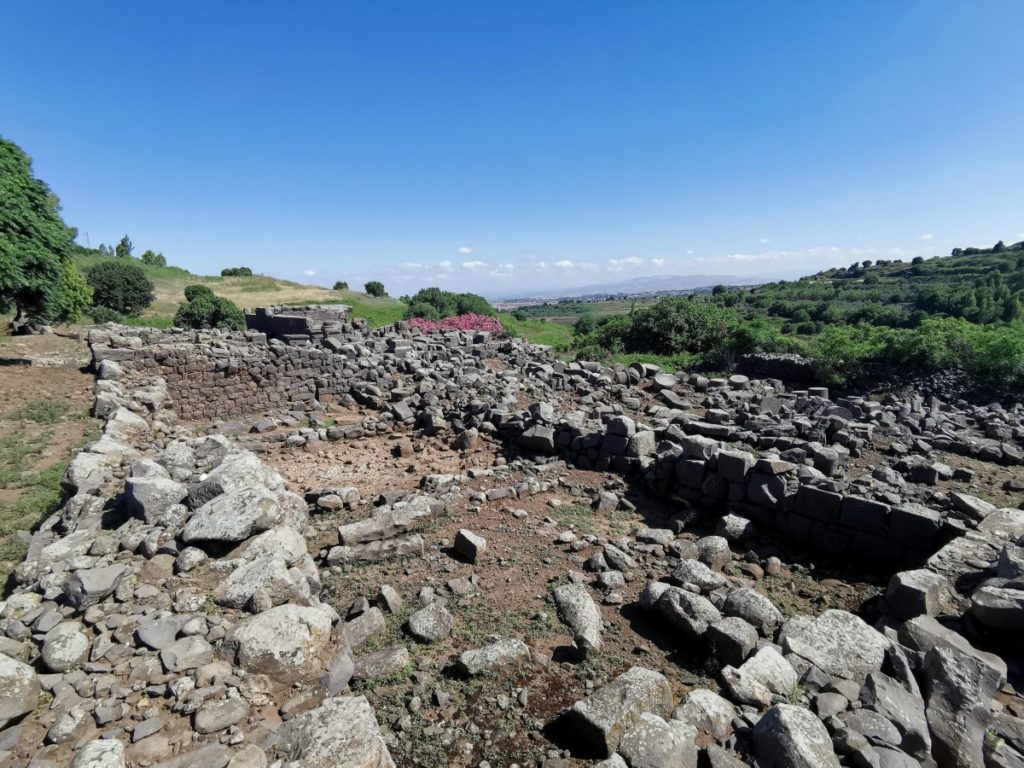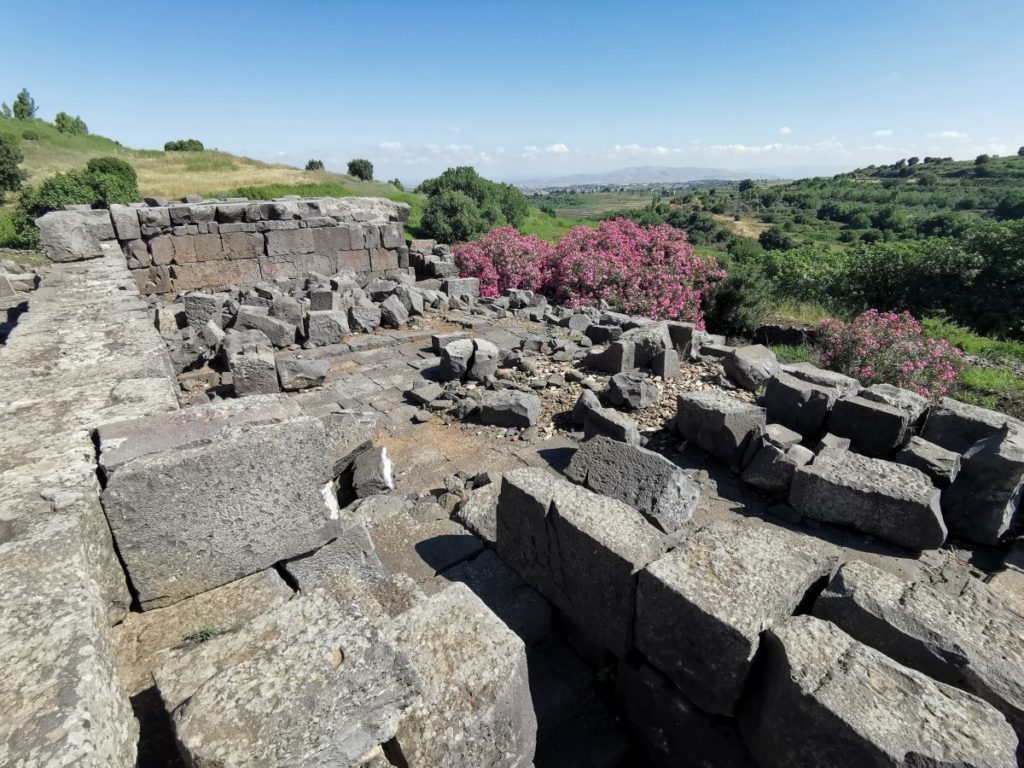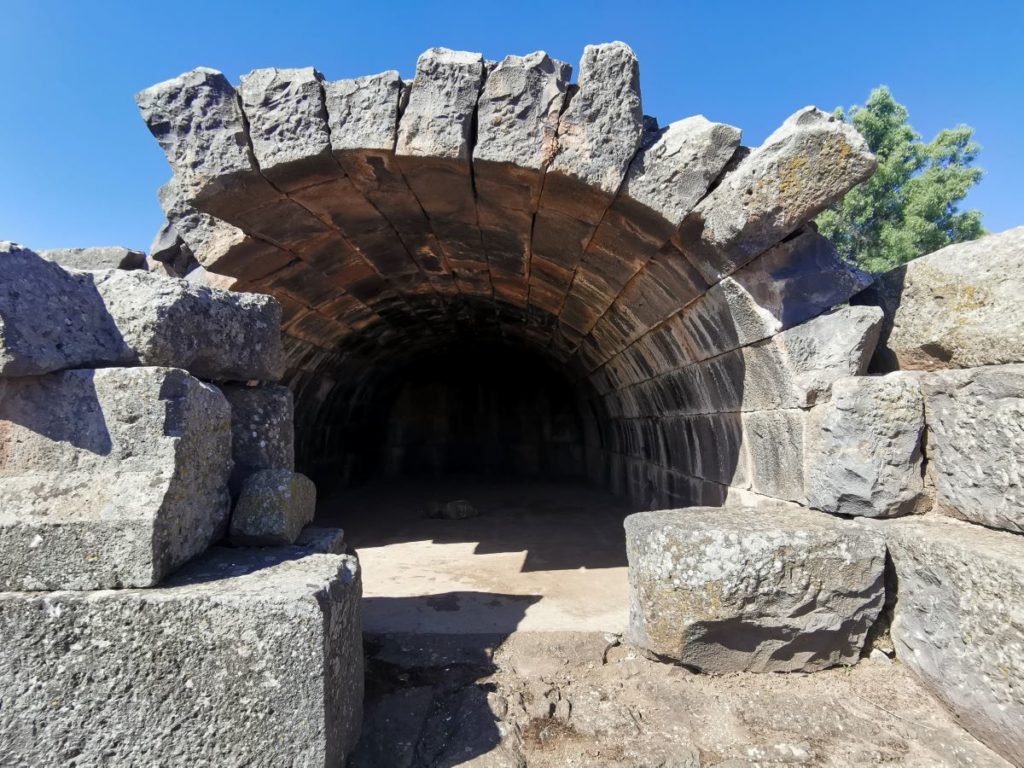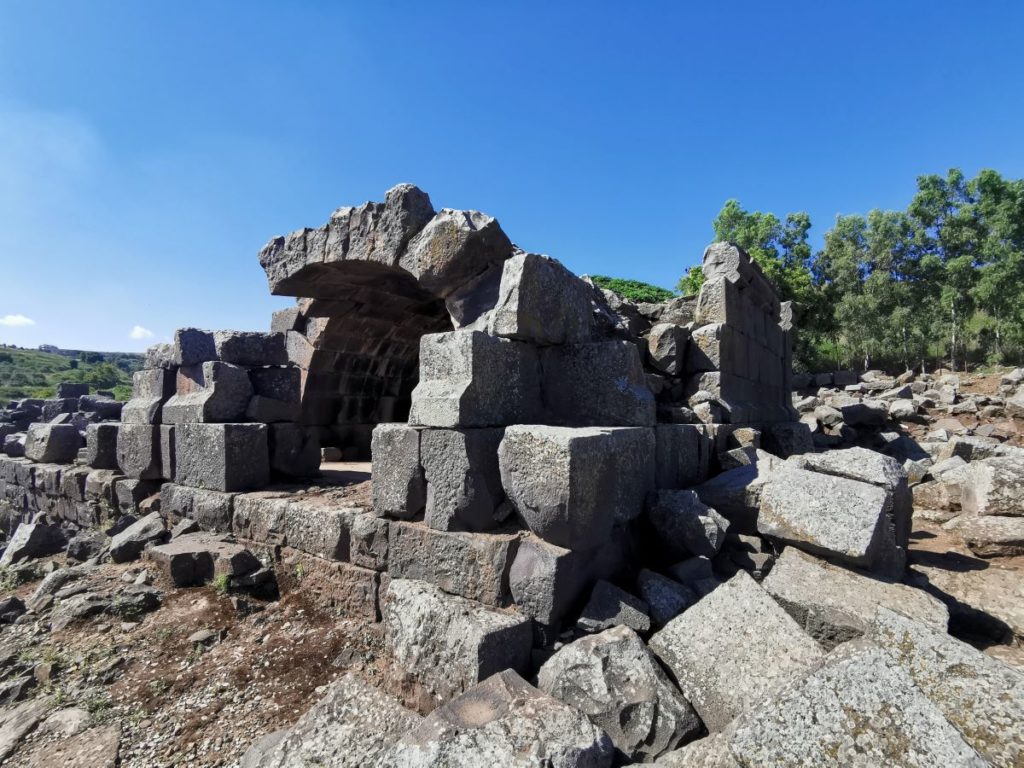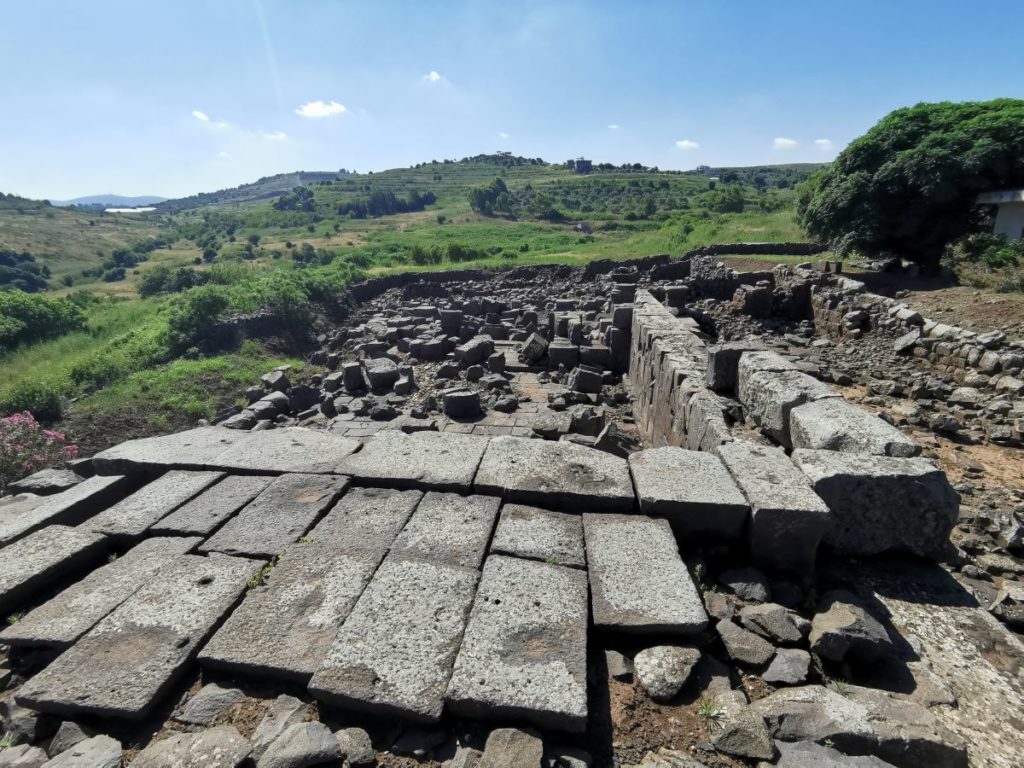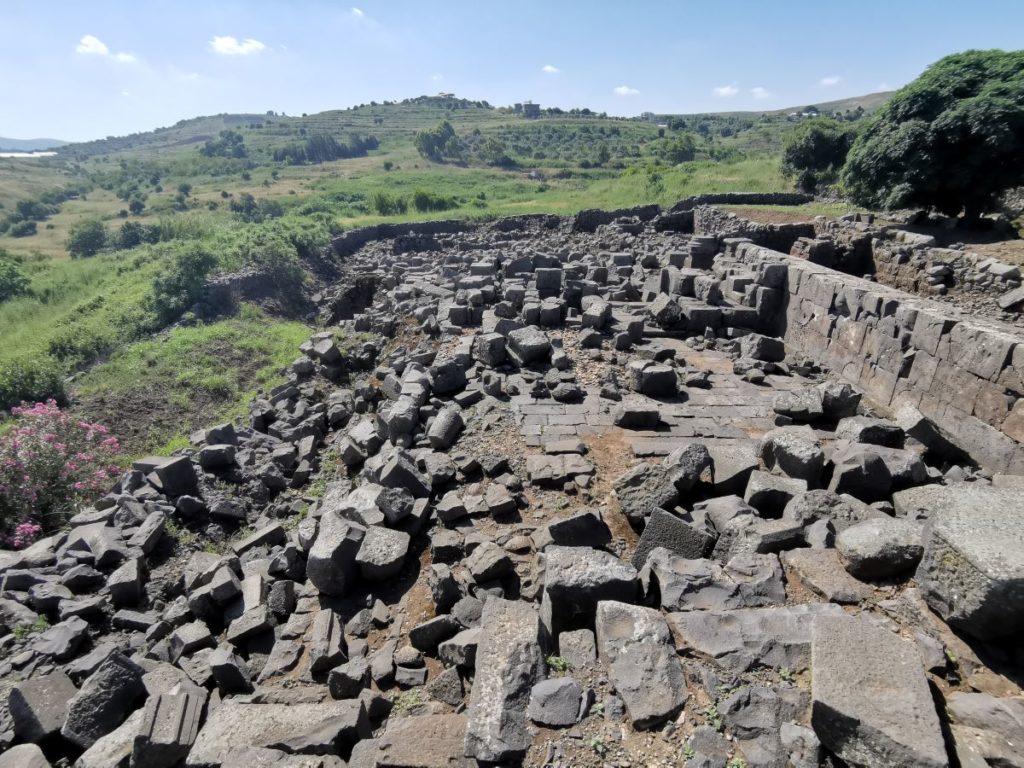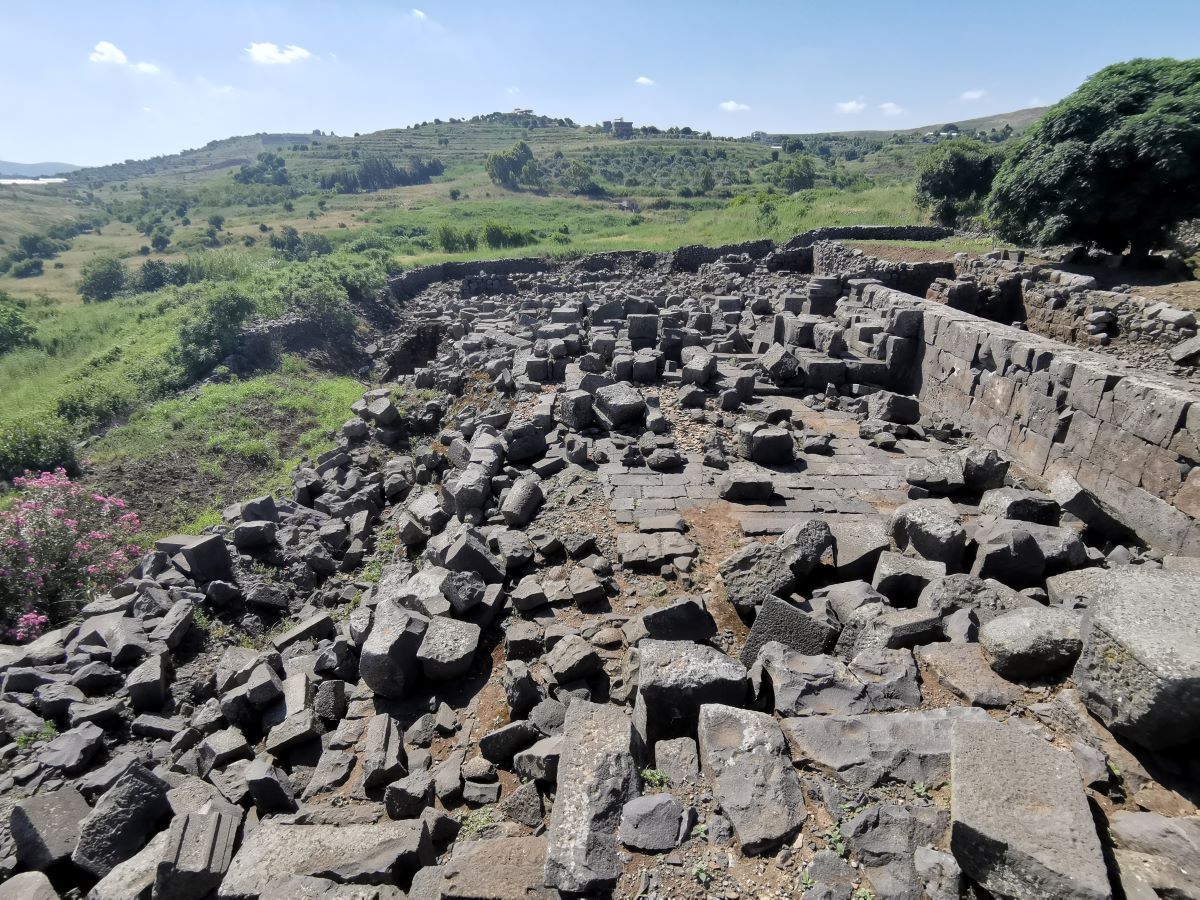Menjez village houses the only Roman-era sanctuary built from basalt in Lebanon.
Toponym
The site is known under two different names:
Beit Jaalouk, a local appellation given to the site as it is erected near the water source of “Nabee’ (source of) Jaalouk” – Beit meaning “House” – the house of Jaalouk.
Maqam El Rab, a local appellation meaning the Shrine of the Lord.
Deity
Five inscriptions found on site during excavations relate to the layout of the sanctuary and the organization of local cults.
The oldest inscription states the following: “Thanks to sacred funds, the construction of a wall was carried out in the years 160 AD, under the supervision of the priest Saizoubas son of Baréon and under the authority of his son Abiddaranes and Aboudemmos son of Sabinus”.
In a cartouche, on a column drum, a second inscription mentions new works under the priesthood and the curatorship of Sabinus, also known as Abou-Demmos, son of Sabinus.
Three other texts originate from a priest named Drusus: one of them is a dedication to Athena – goddess of war -, probably the tutelary deity of the temple. The other two texts, engraved on two sides of the same plinth, commemorate the offering of statues of Nemesis (goddess of divine retribution) and Kalos kagathos (a Greek phrase to describe an ideal of gentlemanly personal conduct), in February 262 AD.
Structure
Open to the south-east, and surrounded by a peribola (sacred enclosure), the temple is a pseudodipteral-peripteral building (temple with a single peristyle surrounding the cella) that rises on a two-seat podium, and includes a pronaos (space of the temple’s entrance) and a paved cella (section where the deity is venerated) at the bottom of which is the platform of an adyton (sacred area inside the cella).
Due to the peculiarities of the basalt stone, the temple’s walls, columns, bases and other architectural sections and elements have been reduced in size and height.
While walking inside the temple, one can find the remnants of columns, column drums, column capitals, and scattered debris of the temple structure’s stones.
Archeologists D.Krencker and W. Zschietzschmann who studied the sanctuary believe that a Christian chapel was installed in the cella of the temple during the Byzantine era, with its apse in the pronaos.
No trace of it remains today, probably due to the restoration works performed on site.
Karim Sokhn Tour Operator & Tour Guide
References:
La vie Religieuse Au Liban Sous L’Empire Romain – Julien Aliquo
